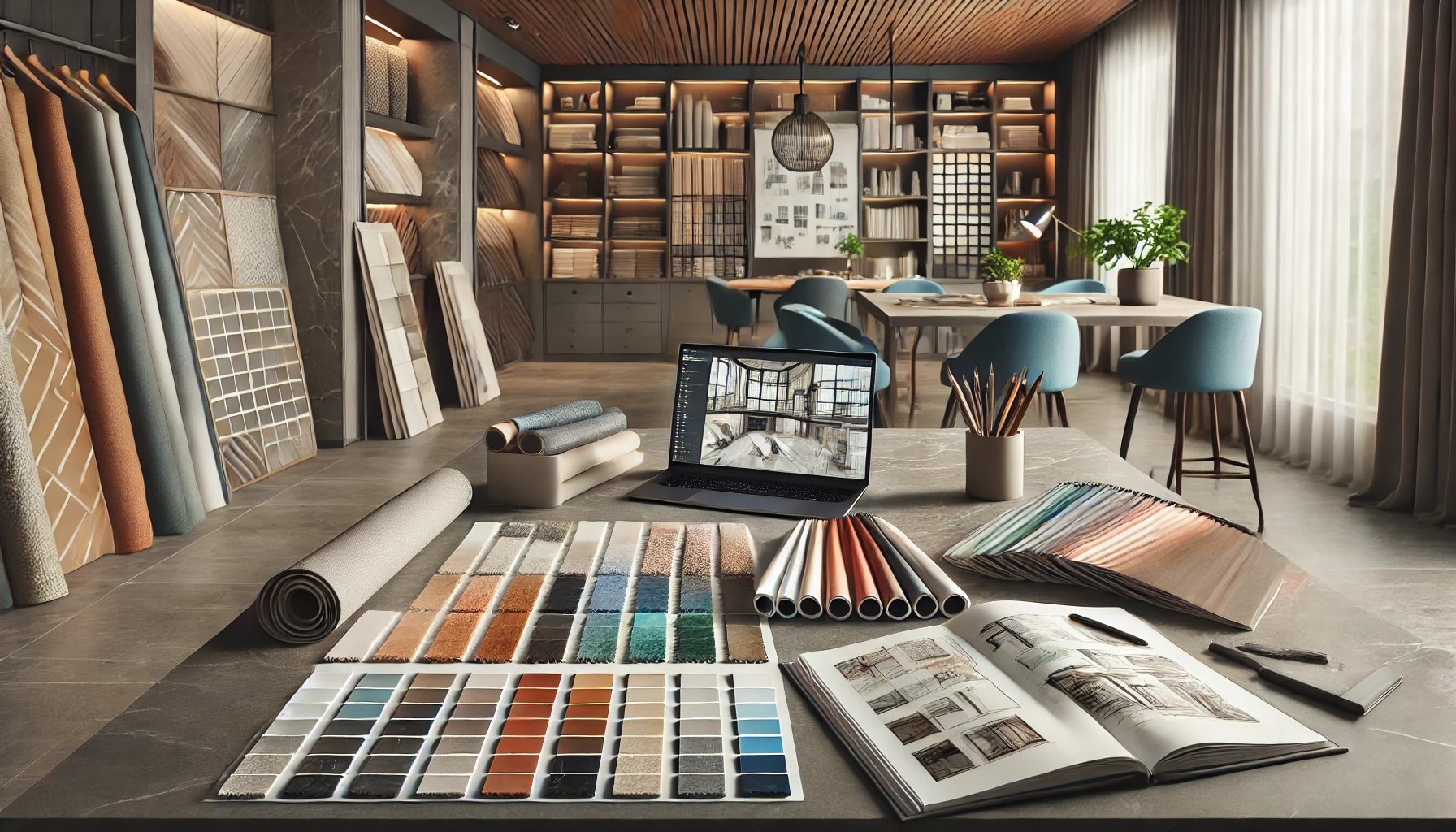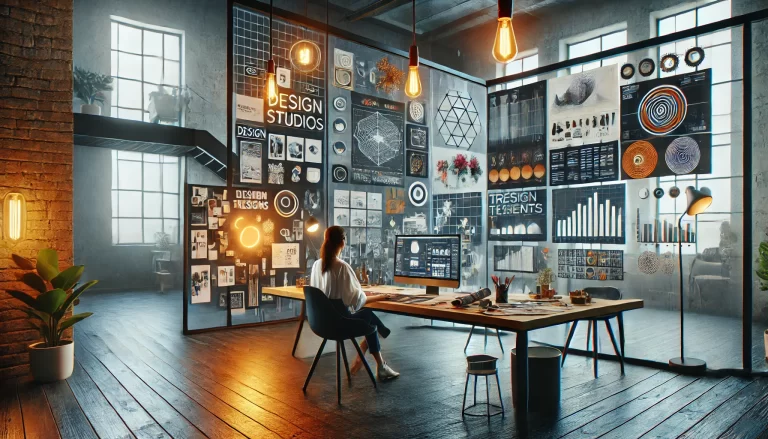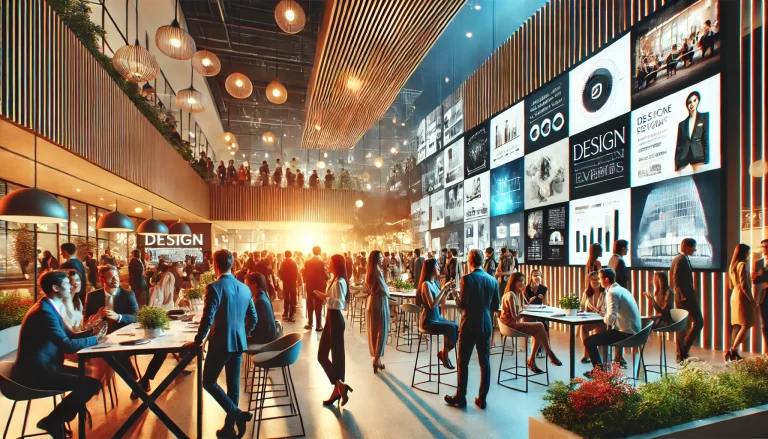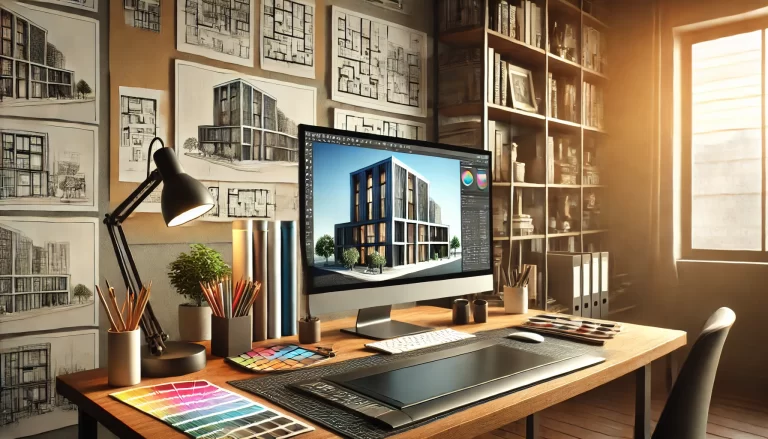How to Choose the Right Materials for Interior Design Projects

Selecting the right materials for your interior design project is one of the most important decisions you’ll make as a designer. The materials you choose not only impact the aesthetic quality of the space but also influence the functionality, durability, and environmental footprint of the project. Here’s a comprehensive guide to help you make informed decisions when choosing materials for your interior design projects.
1. Understand the Function of the Space
Before choosing materials, consider the primary function of the space. Different areas in a home or commercial environment require different types of materials to ensure that the space is both functional and aesthetically pleasing.
• High-Traffic Areas: In spaces like entryways, corridors, and kitchens, choose durable materials that can withstand heavy foot traffic, spills, and wear. Opt for flooring materials such as porcelain tile, hardwood, or high-quality vinyl that can hold up over time.
• Private Spaces: For bedrooms or private areas, consider materials that promote relaxation and comfort. Soft fabrics like velvet, linen, and cotton for upholstery and bedding can create a cozy atmosphere.
• Wet Areas: For bathrooms, kitchens, and other high-humidity spaces, it’s essential to choose moisture-resistant materials. Porcelain tiles, marble, and engineered stone are excellent choices for counters and floors in these environments.
2. Consider Aesthetic and Design Style
Your material choices should complement the overall design style of the space. Whether you’re designing a modern, traditional, industrial, or bohemian interior, there are materials that align with each style.
• Modern/Contemporary: Opt for sleek, minimalistic materials like glass, stainless steel, and polished concrete. These materials can help create clean lines and open spaces.
• Traditional: Wood, leather, and rich textiles like silk or wool can evoke a classic and timeless feel. Choose materials that reflect the warmth and comfort associated with traditional interiors.
• Industrial: For an industrial design, look for raw and exposed materials like brick, concrete, metal, and reclaimed wood. These materials add character and texture to the space.
3. Durability and Maintenance
Materials should be selected not only based on their beauty but also for their ability to withstand wear and tear. Consider the long-term durability and maintenance requirements of each material.
• Hardwoods: Hardwood floors are durable, but they require regular maintenance such as cleaning and refinishing. If you’re working on a high-traffic area, choose harder wood species like oak, maple, or hickory.
• Stone: Materials like granite, marble, and quartz are durable and easy to maintain, making them ideal for high-use areas like kitchens. However, natural stone may need sealing to prevent staining.
• Textiles: Upholstery fabrics should be chosen based on the amount of use the furniture will get. For example, choose durable, stain-resistant fabrics like leather or microfiber for high-use furniture pieces in public spaces.
4. Budget and Cost
Budget is always a key factor when choosing materials. Some materials are more expensive than others, and it’s essential to balance aesthetics with cost-effectiveness.
• Luxury Materials: Materials like marble, high-end hardwoods, and custom-made furniture can add a touch of luxury to your design but may significantly increase costs. These materials should be used selectively in areas where they will make the most impact.
• Affordable Alternatives: If you’re working with a limited budget, consider using engineered or composite materials that replicate the appearance of more expensive materials. For example, quartz countertops offer the look of marble but at a more affordable price.
5. Sustainability and Environmental Impact
Sustainability has become a critical consideration in interior design. Choosing eco-friendly materials can reduce the environmental impact of your design while promoting healthier living spaces.
• Recycled Materials: Look for materials made from recycled content, such as reclaimed wood, recycled glass tiles, or composite materials made from recycled plastic or rubber.
• Sustainable Timber: Opt for sustainably sourced woods with certifications like FSC (Forest Stewardship Council) to ensure that the timber has been harvested responsibly.
• Low-VOC Materials: Volatile Organic Compounds (VOCs) are harmful chemicals found in some paints, finishes, and materials. To promote better indoor air quality, choose materials with low or no VOCs, such as natural paints, finishes, and adhesives.
6. Color, Texture, and Finish
Color, texture, and finish all play a crucial role in how materials contribute to the overall look and feel of a space.
• Color: Consider how the color of the material interacts with the rest of your color scheme. For example, light-colored woods can brighten a room, while darker tones add warmth and intimacy.
• Texture: Materials with different textures add depth and interest to a design. Smooth surfaces like glass and polished stone contrast beautifully with rough textures like raw wood or textured textiles.
• Finish: The finish of a material—whether matte, gloss, or satin—affects how light interacts with the surface. For example, glossy finishes can make a space feel sleek and modern, while matte finishes can evoke warmth and softness.
7. Manufacturer and Supplier Selection
Choosing high-quality materials from reputable manufacturers is essential for achieving long-lasting and aesthetically pleasing results. Work with trusted suppliers who provide detailed product information, warranties, and customer support. Check reviews and, if possible, visit showrooms or request samples to assess the materials in person.
Conclusion
Choosing the right materials for your interior design project is crucial for achieving the desired aesthetic, functionality, and durability. By considering factors like the function of the space, design style, material durability, budget, sustainability, and texture, you can select materials that best meet the needs of your project. Thoughtful material selection ensures that your designs will not only look beautiful






